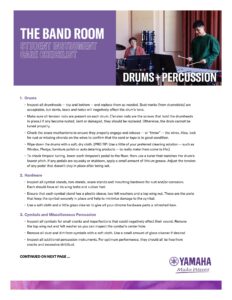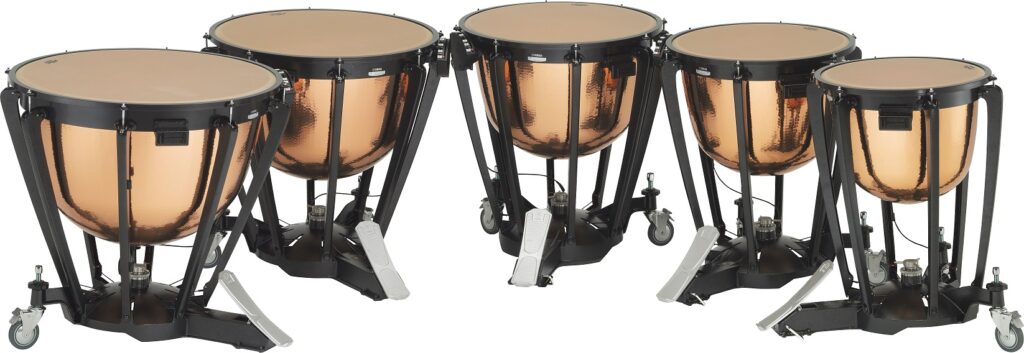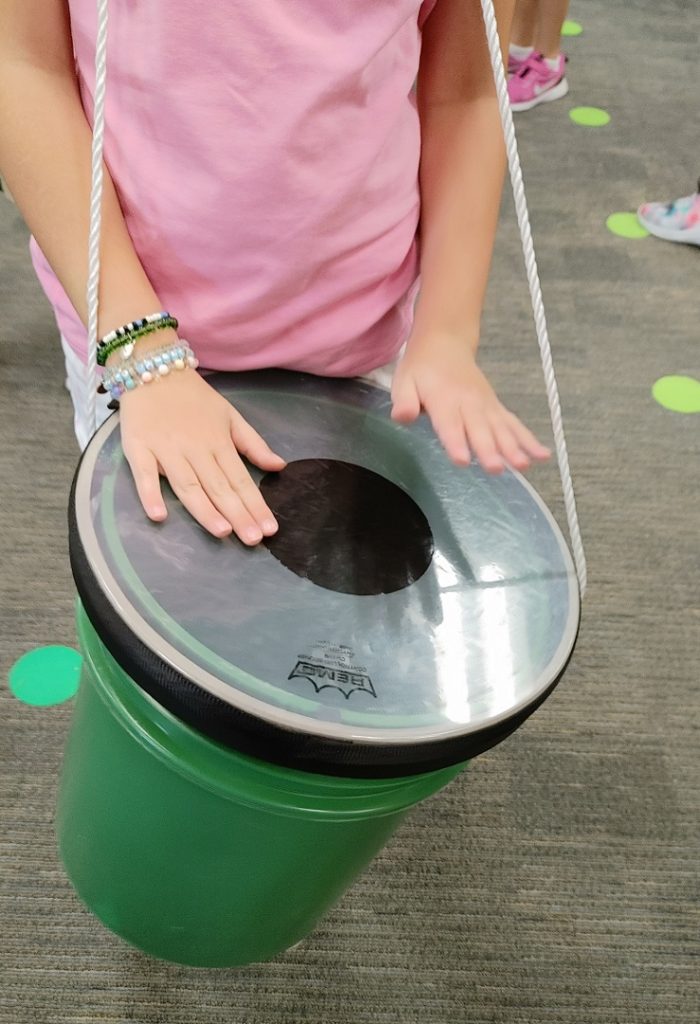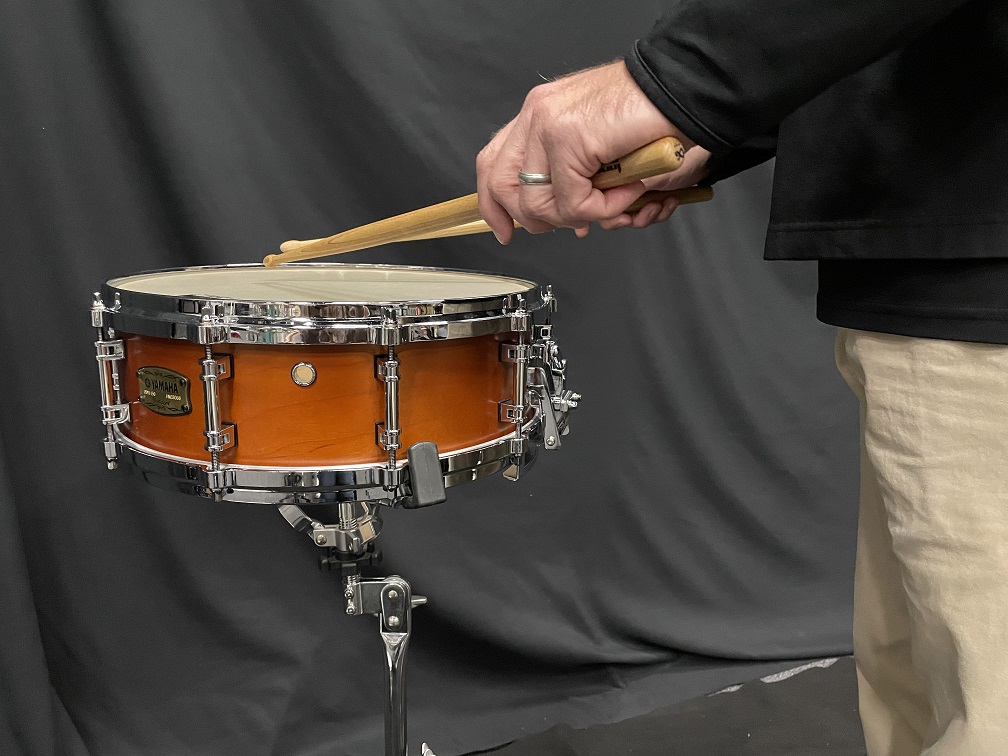Off-Season Care and Maintenance for Percussion Instruments
Keep up maintenance and care of your percussion equipment after every season to ensure that it remains in top shape.
After a long season of percussion activities, it’s time for a much-needed break. Of course, this includes your percussion equipment.
Four Key Steps
1. Take Inventory: Take a complete inventory of all the equipment at the end of each semester. This will help eliminate the question of “what do we actually have” and will help cut down on “disappearing” equipment during the down times.
2. Designate a Contact: Designate a specific individual to be responsible for all of the instruments during the off-season. This person’s job will be to make sure that maintenance checks for all instruments are performed. Oftentimes, the care and maintenance of percussion equipment after a show is overlooked. The best way to ensure that instruments are ready for the next event is to make sure that the ensemble staff members are diligent about post-event care.
3. Find the Proper Environment: Keep all musical instruments in a cool, dry environment all year. Extreme temperature changes creates extra wear and tear on the equipment, so, for example, do not leave battery percussion in an equipment truck for any length of time. All instruments should be kept under some form of supervision or security at all times to ensure the integrity of the equipment. Due to extreme weather during the winter, improper storage — especially in the Midwest and eastern part of the United States — can do significant damage to percussion instruments.
4. Keep it Clean: At the end of every season, the entire battery should be thoroughly cleaned. Take the heads off each drum, clean each part, and then re-lubricate everything with lithium grease as the drum is reassembled. After doing this, place clean drum covers on the drums before storage. Drums should be stored in Field-Master™ hard cases or Battery Packs™ for optimal protection. As noted in #3, all equipment should be stored in a secure, cool and dry indoor environment.
Care Details for Specific Instruments
Snare Drums
- Each drum should be carefully inspected and cleaned while being disassembled and then reassembled.
- Wipe down each drum with a soft cloth, including the hardware and the shell.
- The tension on both the top head and bottom head should be reduced by half. (During storage, the heads should be taut to keep the tension rods in place.)
- For the snare guts, the vertical adjustment should be loosened by three or four turns.
- If the drums have an MTS unit, it should be stored in the off or down position.
- Ensure that any hardware attached to the drum for the carrier is tight and in working order.
- Take note of any missing or corroded parts that may need replacement.
- Place a clean drum cover on the drum and then place the drum in a hard or soft case.
- Each drum should be stored in a secure and cool environment.
Multi-Toms
- Each tom set should be carefully inspected and cleaned while being disassembled and then reassembled.
- Wipe down each drum with a soft cloth, including the hardware and the shell.
- The tension on the head should be reduced by half. (During storage, the heads should be taut to keep the tension rods in place.)
- Make sure the spacers and tenor rails are tight and in working order.
- Take note of any missing or corroded parts that may need replacement.
- Place a clean drum cover on the drum and then place the drum in a hard or soft case.
- Each drum should be stored in a secure and cool environment.
Bass Drums
- Each drum should be carefully inspected and cleaned while being disassembled and then reassembled.
- Wipe down each drum with a soft cloth, including the hardware and the shell.
- The tension on both heads should be reduced by half. (During storage, heads should be taut to keep the tension rods in place.)
- Take note of any missing or corroded parts that may need replacement.
- Place a clean drum cover on the drum and then place the drum in a hard or soft case.
- Each drum should be stored in a secure and cool environment.
Hardware and Carriers
- Wipe down all parts with a soft cloth.
- These items can be left stacked neatly in an indoor facility.
- Take note of any missing or corroded parts that will need to be replaced prior to the first camp.
- Do not store hardware or carriers in the cases with the drums because they can damage the finish and hardware over time.
Keyboards
- Store keyboard instruments in a cool, dry indoor place to avoid extreme heat or cold. Improper winter storage may do significant damage to any instrument.
- Do not keep keyboard instruments on an equipment truck for any length of time.
- Ensure the integrity of the instrument by keeping it under some form of supervision or security at all times.
Marimbas, Vibes and Xylophones
- Wipe down the bars with a soft cloth — avoid the use of any chemicals.
- Take the bars off the instrument and store them in a cool, dry place up off the floor and wrapped in a soft blanket or, better yet, in a dedicated instrument bag designed to prevent any sliding or shifting that may occur in blankets.
- Avoid storing any objects on the wood frames or the accessory bars.
- Wipe down the wood and metal frame with a soft cloth.
- Take note of any missing or corroded parts that may need replacement.
- Check all cords and replace any that are worn or frayed.
- Place a clean cover on the instrument for storage.
Timpani
- Wipe down the bowls and heads with a soft cloth — avoid the use of any chemicals.
- The heads should be left in tune — do NOT adjust the tension of the heads.
- Pedals should be in the forward or “toe down” position to keep the tension on the heads.
- Take note of any missing or corroded parts that may need replacement.
- Place a clean cover on the instrument for storage.
Bells
- Wipe down the bars with a soft cloth — avoid the use of any chemicals.
- The bars do not have to be removed from the instrument frame.
- Store the instrument in its original, closed case. Do NOT store the instrument lying flat on top of another mallet instrument, such as a xylophone, marimba or vibraphone.
- The instrument should be stored flat in a cool, dry room.
Chimes
- Wipe down the tubes and heads with a soft cloth — avoid the use of any chemicals.
- Take note of any missing or corroded parts that may need replacement.
- Check all cords and replace any that are worn or frayed.
- The instrument should be stored upright in a cool, dry room.
- Place a clean cover on the instrument for storage.
Concert Snares and Concert Toms
- Wipe down each drum with a soft cloth, including the hardware and the shell — avoid the use of any chemicals.
- The tension on the drum heads should be reduced by half. (During storage, drum head should be taut to keep the tension rods in place.)
- For the snare guts, the vertical adjustment should be loosened by three or four turns and in the off position.
- Store in cases — preferably hard cases, if appropriate sizes are available.
Concert Bass Drum
- Wipe down each drum with a soft cloth, including the hardware and the shell — avoid the use of any chemical.
- The drum head should remain in tune and does not have to be loosened.
- Place a clean cover on the instrument for storage.
Miscellaneous Hardware
- All hardware should be cleaned with a soft cloth.
- Stack the hardware neatly in an indoor environment.
- Tighten all parts before storing.
- Take note of any missing or corroded parts that may need replacement.
- Hardware tends to “disappear” during the off-season because the parts and pieces are small — a full inventory list of your equipment will help cut down on replacing lost items.
All this work at the end of every season will help ensure that your musical investment is protected, and that the band is ready to play when the next season rolls around!

















